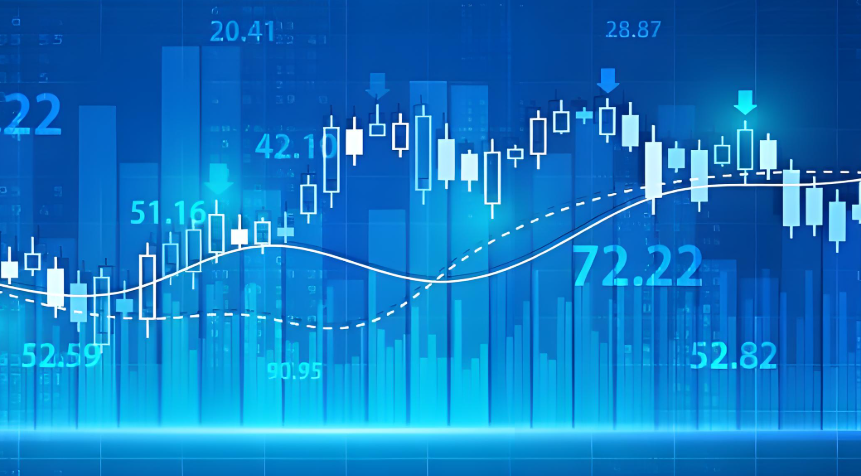The U.S. Neutral Interest Rate Has Rise
Advertisements
On December 25, which is celebrated as Christmas in the Western world, a significant shift was observed in the dynamics of the U.S. bond market. The yield on the 10-year U.S. Treasury bonds surged past 4.6%, while the 30-year bond yield reached 4.77%. Interestingly, this was the same threshold from which the yields began to decline back in late May. As we step into a new financial environment, the long-term U.S. bond yields have hit a seven-month high. This upward trend can be attributed mainly to the Federal Reserve’s altered stance on interest rates. Just recently, the Fed reduced its expectations for rate cuts, suggesting that there will only be two additional cuts in 2025, a stark decrease from the four cuts hinted at in September.
In tandem with these increases in bond yields, the U.S. dollar exhibited a parallel response. On December 20, the dollar index crossed the 108 mark, climbing to 108.54. The last time the dollar index saw such numbers was back in November 2022, following a notable decline from a peak of 114.78 during the latter part of September of the same year. This co movement between bond yields and the dollar underscores a critical relationship that exists within the financial markets.
The pivotal factor in this scenario is the sudden shift in the Federal Reserve's approach to monetary policy, which has left market participants feeling unsettled. This impression of uncertainty stems from the Fed’s deviation from anticipated directives. In the world of finance, especially in places like Wall Street, market forecasts are often linear; traders typically anticipate more significant cuts or prolonged hikes whenever the economy reflects necessary adjustments. When unexpected changes occur, such as shifts in macroeconomic data or Fed statements, traders find themselves at a disadvantage. The recent downturn in both stock and bond markets is a clear reflection of this trader frustration.
Delving deeper into the reasons behind the Fed's transformation, on December 18, the Federal Reserve implemented a 25 basis point rate cut. However, this cut was accompanied by a hawkish outlook on interest rate predictions. Jerome Powell, the Fed Chair, advocated for a cautious approach during his subsequent press meeting. He noted that the overall economic landscape in the U.S. seems robust and that considerable strides have been made toward the goals set by the Federal Reserve in the past two years. This declaration set the tone for a shift in monetary policy.
Of particular interest to the market was Powell's position on inflation. He acknowledged that while inflation has significantly eased in the past two years, it still hovers above the Fed's long-term target of 2%. Estimates based on the Consumer Price Index indicate that the overall Personal Consumption Expenditures (PCE) price index rose by 2.5% for the year ending in November, with core PCE, which excludes food and energy prices, increasing by 2.8%. This data reinforces the perspective that long-term inflation expectations remain intact, affirming insights drawn from various surveys and financial market indicators.

Powell’s statement emphasized the need for balance as the Fed navigates its monetary policies. He pointed out that with the rate cuts made, the current stance of the Fed is now noticeably less restrictive. Thus, in light of anticipated future adjustments to the policy rate, caution remains paramount. Such statements highlight Powell's view on the U.S. economy's neutral interest rate—a level at which supply and demand are perfectly balanced, and the economy operates efficiently without external shocks.
During this discussion, Powell detailed the Fed's definition of the neutral interest rate, explaining that it is relative and not precisely defined. His comments suggested that the Fed is gravitating closer to this neutral point, especially after the target range for the federal funds rate was adjusted down from 4.5%-4.75% to 4.25%-4.5%. Such positioning prompts critical inquiries into whether these adjustments align with Powell's own assessments of neutral rates.
Moreover, voices from within the economic community are increasingly indicating that the neutral rate in the U.S. might be elevated due to noticeable rebounds in productivity. Some estimates have noted that productivity growth may have surged by approximately 2%. This acceleration in productivity could potentially drive inflation down as wage growth outpaces price increases, thereby stabilizing corporate profit margins.
Two primary catalysts behind this surge in productivity have been recognized: the relentless advancements in artificial intelligence and transformative changes from the digital revolution. As a result, consumer behavior is expected to become remarkably elastic, while capital expenditures may become less vulnerable to fluctuations in interest rates than in the past.
Interestingly, during the Federal Reserve's decision-making process, one voice notably stood against the rate cut—Beth M. Hammack, the president of the Cleveland Federal Reserve. Her dissenting opinion was rooted in the economic momentum coupled with recent spikes in inflation data, which led her to adjust her inflation forecast for the upcoming year. Hammack raised concerns about the potential risks of inflation stagnating above 2%, which could threaten to destabilize inflation expectations and complicate efforts to restore it to desired levels.
Ultimately, the recalibration of the neutral interest rate may suggest that the U.S. economy could be facing a prolonged environment of heightened interest rates. As such, the increase in bond yields and the strengthening of the dollar becomes an inevitable consequence of these developments. Current market attention is keenly focused on the implications of the dollar's trajectory, raising pertinent questions about just how high the dollar can rise in this changing financial landscape.